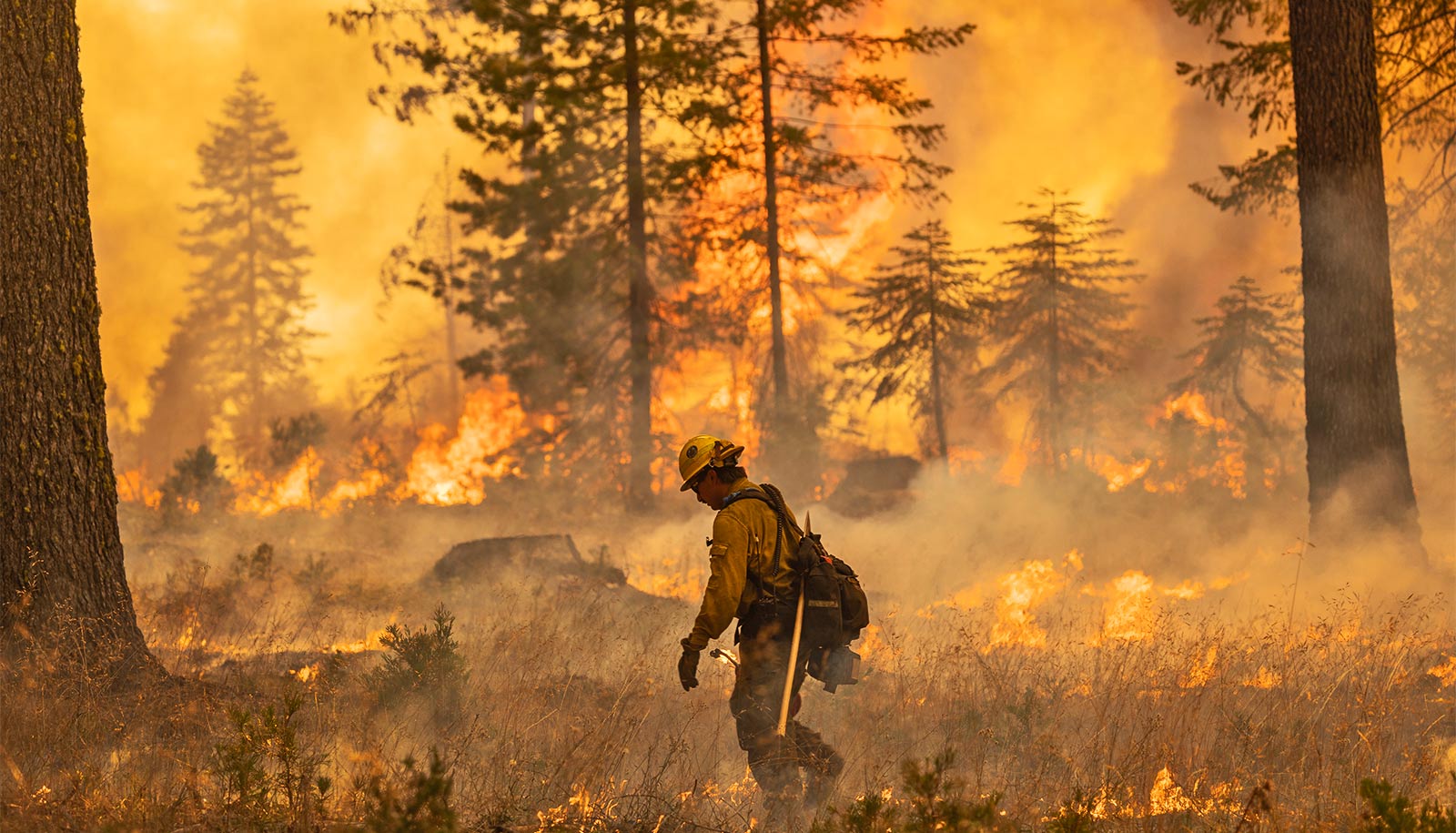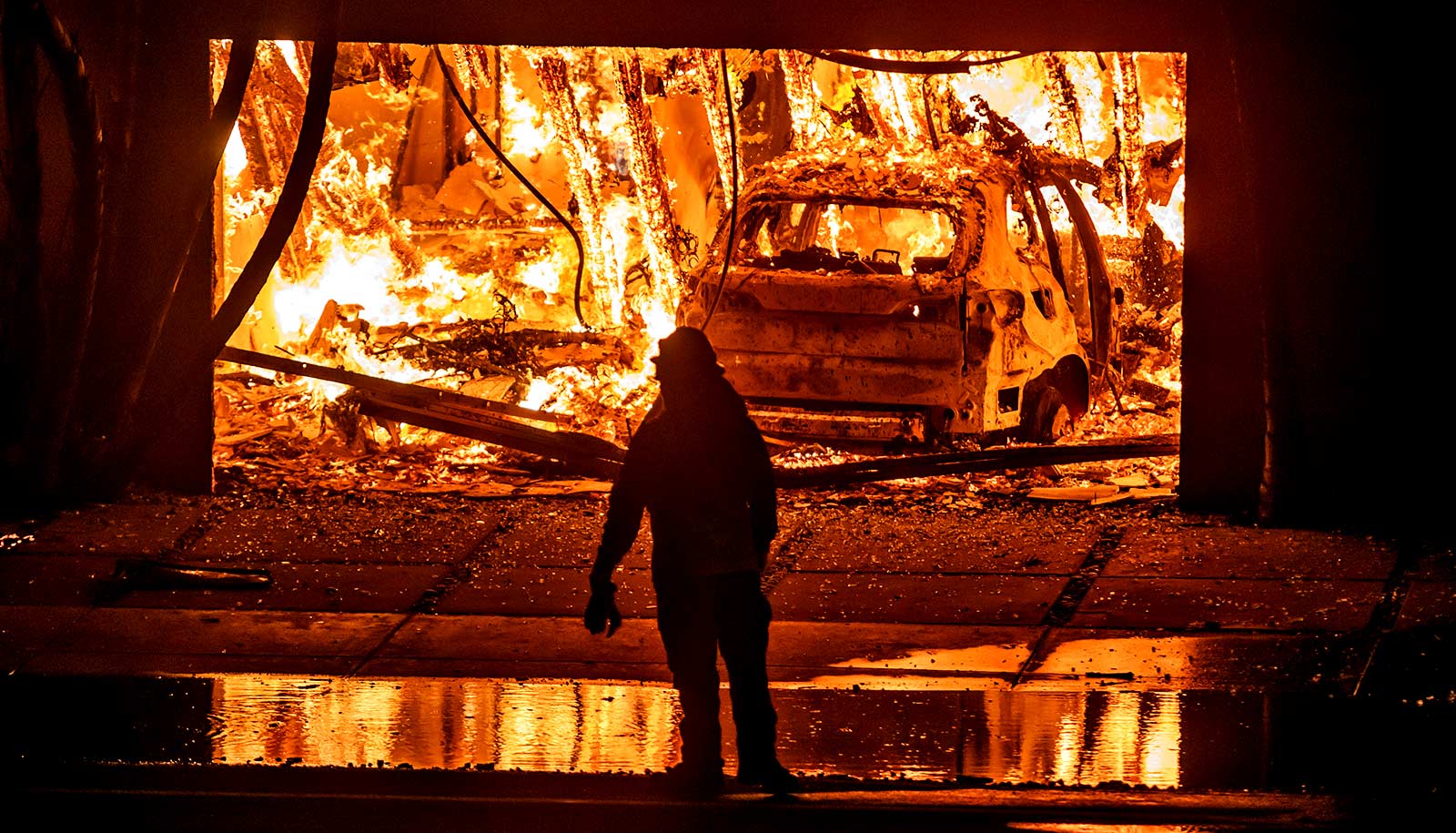Summer wildfires boost air pollution considerably more than previously believed, research shows.
Naturally burning timber and brush launch what are called fine particles into the air at a rate three times as high as levels noted in emissions inventories at the US Environmental Protection Agency.
The microscopic, sooty specks that form aerosols are a hazard to human health, particularly to the lungs and heart.
“Burning biomass produces lots of pollution. These are really bad aerosols to breathe from a health point of view,” says Greg Huey, a professor of earth and atmospheric sciences at Georgia Institute of Technology.
The findings also describe other chemicals in wildfire smoke, some never before measured, and will likely raise the estimated annual emission of fine particles, or particulate matter, in the western United States significantly.
The previous EPA data had been based on plume samples taken in controlled burns ignited by forestry professionals. Measuring plumes so thoroughly, from the sky, directly in the thick of a wildfire had not been possible before this study.
For the study, researchers deployed planes to plow through the plumes of three major wildfires, including the 2013 Rim Fire, the third-largest wildfire in California history. An ensemble of instruments from NASA and the US Department of Energy aircraft allowed teams of researchers on board to measure chemicals and particles in real time and cull masses of data, which the new study is based on.
“We actually went to measure, right above the fire, what was coming out,” Huey says.
‘You can see the smoke, and it’s dark for a reason…You start to wonder sometimes what all is in there.”
Bob Yokelson, a professor of atmospheric chemistry at the University of Montana was in a group of about 20 scientists who selected the instruments to be installed on the large NASA plane. “We really didn’t have to go without anything we wanted really badly,” he says. Yokelson also helped design the flight paths.
The paper, published in the Journal of Geophysical Research: Atmospheres, “is expected to serve as a basis for the next NASA fire chemical monitoring mission,” Huey says.
Methanol, benzene, ozone precursors, and other noxious emissions collected from wildfire plumes may make it sound like an oil refinery went up in flames. That’s not so far-fetched, as oil and other fossil fuels derive from ancient biomass.
“You can see the smoke, and it’s dark for a reason,” Huey says. “When you go measuring wildfires, you get everything there is to measure. You start to wonder sometimes what all is in there.”
Controlled burns are cleaner
The findings showed many organic chemicals in the wildfire plumes, and technological advancements allowed researchers to detect certain nitrates in the smoke for the first time. But burning biomass does not appear to be a dominant source of these chemical pollutants.
Wildfires in California spew greenhouse gas
The major findings of the study involved the fine particles, which are dusty, sooty particles much thinner than a grain of sand or a human hair. They can go airborne, as aerosols, on their own or combined with moisture. Then people can inhale them. Some particulate matter contains oxidants that cause genetic damage. They can drift over long distances and pollute populated areas.
Industrial sources also expose people to harmful aerosols, but fires produce more aerosol per amount of fuel burned. “Cars and power plants with pollution controls burn things much more cleanly,” Huey says.
“A prescribed fire might burn five tons of biomass fuel per acre, whereas a wildfire might burn 30.”
Various aerosols also rise up in the atmosphere, but their net effect on global warming or cooling is still uncertain, as some aerosols reflect sunlight away from the Earth, and others, in contrast, trap warmth in the atmosphere.
As global warming expands wildfires in size and number, the ensuing pollution stands to grow along with them. Stepping up professionally controlled man-made burnings may help cut these emissions, the study suggests.
So-called prescribed burnings prevent or reduce wildfires, and they appear to produce far less pollution per unit area than wildfires.
“A prescribed fire might burn five tons of biomass fuel per acre, whereas a wildfire might burn 30,” Yokelson says. “This study shows that wildfires also emit three times more aerosol per ton of fuel burned than prescribed fires.”
While still more needs to be known about professional prescribed burnings’ emissions, the new research makes clear that wildfires burn much more and pollute much more. The data will also help improve overall estimates of wildfire emissions.
Fire prevention professionals follow stringent rules to carry out prescribed burns to avoid calamity and sending pollution downwind into populated areas. The researchers do not recommend that inexperienced people burn biomass, as this contributes to air pollution and can trigger tragic blazes, including wildfires.
Flying into the plume
Experiments like these, in real natural disasters, are uncommon not only because of the challenge of assembling so many great instruments and taking them airborne. The flights are also potentially dangerous. Plumes are not only filled with toxins, but their turbulence tosses planes about, rattling technology and researchers.
How to prep forests for wildfires to come
“The smoke leaks into the cabin and makes you nauseous,” Yokelson says. “You’re trying to take notes, run your instrument, look at the fire, talk on the headset, and get pictures. And at the same time, it’s crazy bumpy. Normally, if you’re in a smaller plane, your stomach is not too happy.”
Flight projects that collected the data and also tropical storm data were: SEAC4RS by NASA and BBOP by the US Department of Energy. SEAC4R stands for Studies of Emissions and Atmospheric Composition, Clouds and Climate Coupling by Regional Surveys. BBOP stands for Burning Biomass Observation Project.
Other researchers from Georgia Tech and from the University of Innsbruck; the University of California, Irvine; the University of Colorado, Boulder; Colorado State University; California State University; Los Alamos National Laboratory; California Institute of Technology; the University of Maryland; Aerodyne Research Inc.; Brookhaven National Laboratory; the University of Oslo; NASA, the National Oceanic and Atmospheric Administration; and Pacific Northwest National Laboratory contributed to the study. NASA funded the work.
Source: Georgia Tech



